Trainees 2012 - ESAC Trainees
 The 2012 Project |
Trainees 2012
|
Detection of Radio Frequency Interferences from SMOS Polarimetric Data
Tutors. Roger Oliva, Guillermo Buenadicha & Manuel Castillo SMOS is ESA's Earth Observation satellite devoted to study the Soil Moisture and Ocean Sea Surface Salinity: two key variables describing the Earth's water cycle. The payload of SMOS is a passive microwave 2-D interferometric radiometer that measures the natural radiation emitted by the Earth at L-band. Since launch in Nov 2009, it was observed that man-made emissions are interfering with SMOS measurements, even though the band is protected and therefore all interferences there are illegal. This project will study an innovative possibility of using the Full-polarimetric measurements (Stokes 3 and Stokes 4 images of the SMOS products) and image processing techniques in order to obtain geo-location of the interfering sources. This is crucial to allow national authorities to switch off the illegal transmitters. See here for my final project report.
|
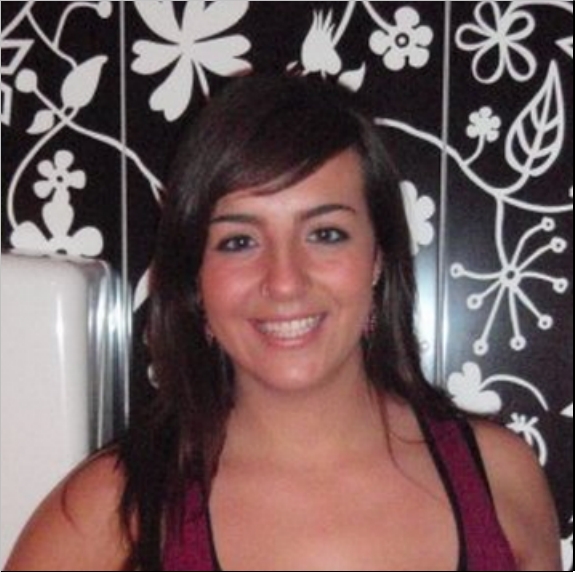 |
Irene Rodriguez Alegre Universitat Autonoma de Barcelona |
|
Yoan Mollard
ENSEIRB-MATMECA, Bordeaux
|
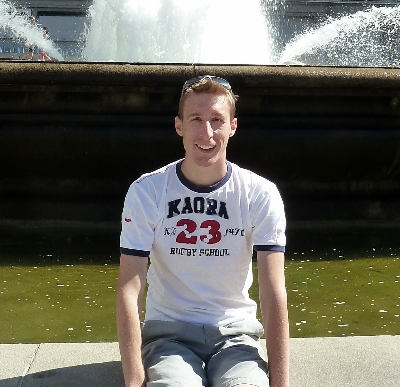 |
What did the X-ray experiment onboard Apollo 15 observe? Tutors. uwe Lammers & Erik Kuulkers Apart from bringing people to the moon in 1971, Apollo 15 also carried onboard various scientific instruments. One of them, the X-ray Fluorescence Spectrometer, was mainly used for mapping of the lunar surface composition. Observations of the X-ray sky, however, were made during the transearth coast for several hours. The data from the spectrometer have been analysed and archived at NASA. However, the measurements from the sky were up to now only available in raw format, in a binary file generated by an IBM 360. There was some information about how the data was structured in this file, but it was not straightforward to decode it. Using the great amount of documentation about Apollo 15 and related experiments, a bit of intuition to make some hypothesis and a homemade C++ program, the aim was to decipher the data, and make it available in FITS files, so that the data could be properly analysed and archived.
|
|
mySpaceCal: a finishing touch of when and where does a satellite look at
Tutors. Erik Kuulkers & Silvia de Castro
There are a lot of astronomical satellites circling around the Earth staring at numerous astronomical targets. Each satellite project has its own devoted time schedule retrievable from the internet, but there is no simple way to analyse them all together. The aim of the project was to combine the time schedules and make the information easily accessible on one website. I have been also working on hardening the security of ESAC websites.
|
Jakub Kałużny AGH University of Science and Technology, Krakow |
|
|
Rutger de Nutte
University of Ghent
|
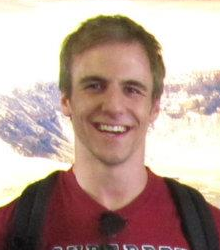 |
Convolution and deconvolution of Herschel maps Tutors. Bruno Altieri, Roland Vavrek, Ivan Valtchanov, Luca Conversi, Tony Marston & Bruno Merin The Herschel observatory launched in 2009 is the largest space telescope to explore the far-infrared and sub-millimeter universe to date. The PACS and SPIRE photometer are mapping large areas of the sky in 6 far-infrared bands, 70, 100 & 160, 250, 350 & 500 microns, at unprecedented sensitivity but different spatial resolution varying by a factor 7, being diffraction limited for the 3.5m telescope diameter. Common-resolution convolution kernels have been created to transform between the different instrumental PSFs. The goal of my project was to test these kernels and software in HCSS (Herschel Common Software System) on nearby galaxies, galactic star forming regions. Not only photometric maps, but PACS spectroscopic line flux maps were tested as well. In a second stage we tested an implementation of the MCS deconvolution technique on PACS and SPIRE images, for instance on resolved debris disks to assess the potential of deconvolution on Herschel maps.
|
|
Multi-Point observations of the Solar Corona for Space Weather
Tutors. Alexi Glover & Juha-Pekka Luntama
Coronal Mass Ejections (CME) are an important element of space weather forecasting. Interacting with the magnetosphere, they can cause geomagnetic storms affecting many of the key systems on which our society relies. The LASCO coronagraphs onboard the SOHO spacecraft have been providing regular CME data for more than 15 years from an orbit around the Sun-Earth L1 point. More recently, with the launch of STEREO we have gained new instrumentation and vantage points, allowing imaging along the whole Sun-Earth line. The aim of my project was to consider CME observations from multiple vantage points, as viewed from a space weather forecasting perspective. Currently occupied vantage points were discussed and example Earth directed events analysed. The final goal was to produce a list of the advantages and disadvantages for the potential locations of a new space weather forecasting spacecraft.
|
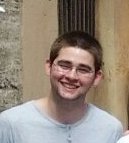 |
Stephen Legg University of Manchester |
|
Luca Matra
Trinity College Dublin
|
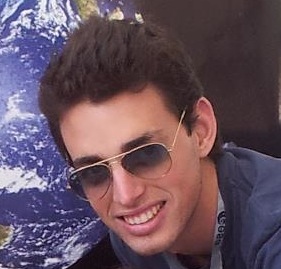 |
A new Herschel view of the young star T54: not a transitional disk? Tutors. Bruno Merin & Catarina Alves de Oliveira Observations of transitional disks give us an understanding of the formation of planets such as our own, but care must be taken in identifying such objects. The Herschel Space Observatory provides us with a more complete view of these young objects, and can help determine the real nature of the far-infrared and sub-millimeter excesses observed. During my project, I analyzed Herschel images of the young star T54, together with its spectral energy distribution (SED), images and spectra from previous observations. Herschel images showed extended emission present in the vicinity of this object, therefore contaminating its photometry and its previous classification as a transitional disk.
|
|
Planetary Science Archive Data Visualisation and Analysis
Tutors. Dave Heather, Santa Martínez & Jose Luis Vazquez
Within the European Space Agency, planetary data are archived and distributed to the worldwide scientific community by the Planetary Science Archive (PSA). This data is stored following the Planetary Data System (PDS) standard. The purpose of the project was to develop DVis: a data visualization and analysis tool that will allow end-users to easily display data in PDS format and perform some fundamental analysis. DVis tool consists both of a graphical user interface, and an API able to perform, among others, image manipulation, image enhancement, filtering and feature extraction. This way the PSA data will be accessible to non-expert users, and also to expert users, academia, and research teams wanting to perform some analysis on the PSA data.
|
Alberto Camacho Polytechnic University of Catalonia, Barcelona |
|
|
Pablo Ramírez Moreta
Universidad Complutense de Madrid & Universidad Autónoma de Madrid
|
X-ray study of the Galactic Centre, Sgr A* Tutors. Norbert Schartel & Maria Santos-Lleo The dynamical centre of the Milky Way hosts a supermassive black hole (SMBH) of 3 - 4 millions of solar masses in the region of the radio source Sgr A*, located at a distance of about 8kpc from the Solar System. Surprisingly, luminosity measurements have revealed this source is much weaker than expected. In the X-ray range from 2 keV to 10 keV, its luminosity is 11 orders of magnitude below its corresponding Eddington luminosity. On one hand, the characteristic X-ray quiet state of Sgr A* constitutes an almost continuous source of information that can help us understand the nature of SMBHs. On the other hand, the most modern X-ray telescopes, like ESA's XMM-Newton Observatory, have detected a few and unexpected events coming from the Sgr A* region: X-ray flares. After collecting all the available observations of Sgr A* from the XMM-Newton Science Archive (XSA) in which quiescent emission and flares were found, the goal of my project was double: first, to make a new analysis of the flare detected on October 3rd 2002 and second, merge all the quiescent state spectra to analyse the resulting spectra. In this regard, I performed a detailed study of the Galactic Centre spectrum and the likely contamination from the surrounding diffuse emission of a nearby supernova remnant, Sgr A East.
|
|
|
Mobile device application for XMM-Newton
Tutors. Aitor Ibarra & Carlos Gabriel
The applications of a web-app in astronomy is a new field full of potential. With the new standards set by HTML5 and powerful javscript libraries such as jQuery mobile, creating powerful apps in a web browser is beginning to become a powerful way to produce cross-platform applications without difficulty. The goal of the project was to produce a mobile-optimized website where astronomers could check the visibility of objects for any revolution of XMM, keep up-to-date with it's science related news, find out its current position above the Earth and where it will travel over the next 48 hours or even just browse the gallery of images submitted to the archive. The app was mainly built with javascript and jQuery mobile, and required a few external libraries to calculate the current position of XMM with the only variable being time.
|
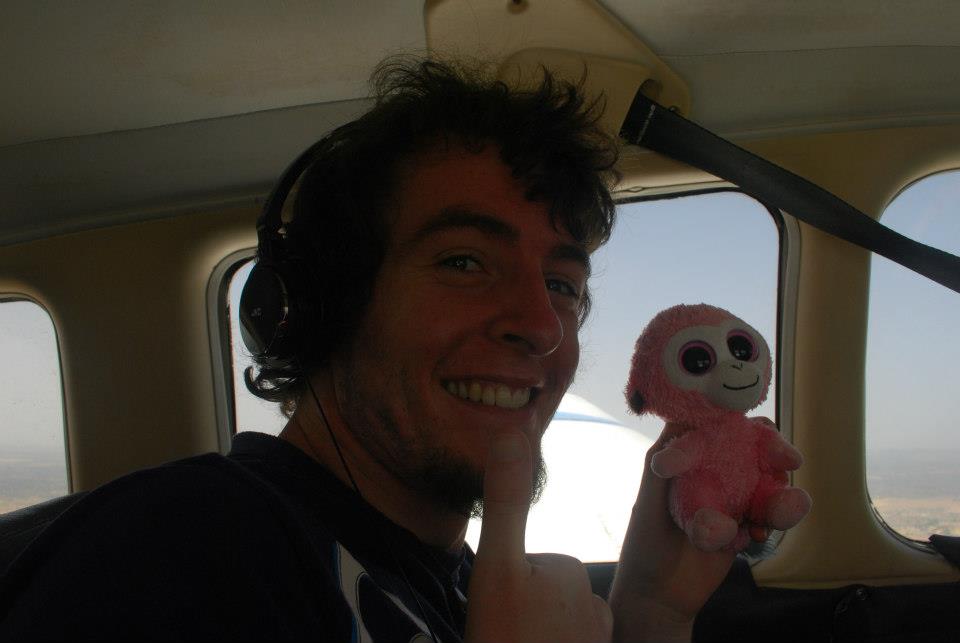 |
Mark Kennedy University College Cork |
|
Alonso Pardo Sanguino
Universidad Politècnica de Madrid
|
Spacecraft and instrument simulation for the Rosetta mission Tutors. David Frew & Federico Nespoli Rosetta is the third cornerstone mission in ESA's Horizons 2000 program. After 7 years of cruise phase, it will reach its main mission destination, Comet 67P/Churyumov-Gerasimenko, in 2014. The Rosetta lander Philae will touch down on the surface of the nucleus of comet in Nov. 2014, while the Rosetta orbiter will accompany the comet on its orbit until the nominal end of Mission end of 2015. This trainee project was performed in the Rosetta Science Ground Segment(SGS) which is responsible for coordinating the science planning activity for the orbiter instruments and the simulation and scheduling software, a system that, due to the evolution of the cometary environment, will have to be flexible enough to take quick decisions to adapt to new scenarios. The main objective of the project was to capture and create the Rosetta spacecraft and onboard instruments models to be used to configure the Rosetta Simulator. The instrument resources like power or data rate are modeled in C and C++ languages. Finally, the implemented models running in the simulator will verify the designed science planning.
|
|
|
Towards Automated Spectral Analysis of Planetary Datasets
Tutors. Albrecht Schmidt
Over the past years, non-negative matrix approximation (NNMA) algorithms have been developed to the point where it is possible to factor a collection of spectra into sources and abundances under linearity and non-negativity constraints in a reasonable time. In collaboration with ECN (Ecole Centrale de Nantes) and University of Paris 11, we are now looking at applying NNMA to ESA's Planetary Science Archive. The aim of my project was to adapt and run algorithms on a large planetary dataset using IDL and Matlab software and to evaluate the feasibility and effectiveness of this approach.
|
Luca Capriotti Polytechnic University of Milan |
|
|
Alberto Escalante del Valle
Universidad Complutense de Madrid
|
3D shape modeling of asteroids Tutors. Benoit Carry & Michael Kueppers Asteroids are no longer points of light in the sky. With the advent of large telescopes (e.g., HST, VLT, Arecibo) and space exploration, we have imaged their disks. Perhaps the most striking observable of any asteroid is its shape. From the analysis of the evolution of asteroids brightness with time (lightcurve), it is possible to reconstruct their 3D shape and determine the direction of their spin axis. My traineeship involved developing a series of tools to gather the available data from Internet repositories, to homogenize their formats and finally to reconstruct 3D shapes of asteroids from the analysis of their lightcurves.
|
|
|
Study of the variability properties of OH/IR stars
Tutors. Francisco Jiménez-Esteban & Pedro Garcia Lario
OH/IR stars are named after their OH maser and strong infrared (IR) emission. They are variable stars at the end of the AGB. During this evolutionary phase the star creates a thick circumstellar envelope that hide the star in the optical, so they are better studied in the infrared. We know that OH/IR stars present extreme photometric variability, with periods that go from ~200 days up to several years and amplitudes between 0.2 to more than 3 magnitudes in the IR. However, the variability properties of OH/IR stars are not well characterised, mainly due to the low number of well known periods. This project aims to overcome this.
During more than 6 years, an IR monitoring program of a large sample (~350) OH/IR stars has been performed. The images have already been reduced and the photometry extracted. My traineeship involved the analysis of the data, creating the light curves, fitting the observational data to theoretical models to obtain the variability properties of the stars in the sample, programming in IDL and using Virtual Observatory tools. |
David Sanchez Aguado Universidad Complutense de Madrid |
|
|
Pablo Arriazu Ruiz
Universidad Politécnica de Madrid
|
Venus Express Science Planning Analysis Tutors. Miguel Almeida & Raymond Hoofs Venus Express has been orbiting Venus since 2006. There are a large set of observation possibilities and their geometries are not always compatible. An extensive discussion process takes place at the start of each planning cycle in order to iron out the divergences and come out with the plan that maximises the science return. In order to make this process run smoother VSOC (Venus Express Science Operations Centre) has a 3D simulator where the observations can be simulated in real time and the different observational parameters are displayed. With this tool the science observations can be best assessed during the science planning discussion, with clear benefits for the results achieved. The aim of my traineeship was to start from the previous project and best integrate the existing tool with the VSOC planning system and its interfaces by providing new geometry modules and importing and exporting capabilities.
|
|
|
Study of pristine post-AGN jets with HST/STIS
Tutors. Carmen Sánchez Contreras & Pedro Garcia Lario
Astronomers have long been puzzled by the morphological variety and bizarre shapes of planetary and pre-planetary nebulae (PNe and PPNe). It is believed that the multiple lobes and high-velocities observed are produced by the impact of fast, collimated winds (jets) on the spherical and slowly expanding circumstellar envelopes (CSEs) formed in the previous Asymptotic Giant Branch (AGB) phase. To date, the properties of these post-AGB jets have not been characterized and their launching/collimation mechanism is still subject to debate.
The main goal of my traineeship was to study the structure and kinematics of the fast, inner winds as well as the collimation degree of post-AGB jets and the spatial scale at which it occurs. The traineeship invovled the reduction of STIS long-slit spectra available for each source. The final spectra were used to derive the structure and velocity fields of these PPNs through spatio-kinematic modeling. The analysis of the data also included flux measurements of the different lines detected to derive, e.g. circumstellar extinction, physical conditions in the gas, characterization of the shocks, etc. |
Jesus Ramos Medina Universidad Complutense de Madrid |
|
|
Tomasz Kanopczynski
University of Technology, Wroclaw
|
Fourier-Transform Spectroscopy in the far-infrared spectral domain: observations of objects from the solar system to high redshift galaxies Tutors. Ivan Valtchanov, Daniella Coia & Luca Conversi One of the three instruments on-board Herschel is the Spectral and Photometric Imaging REceiver (SPIRE). The spectrometer sub-instrument of SPIRE is based on the Fourier-Transform technique: the incoming sky signal is split into two beams that are sent on different optical paths before they recombine. The resulting interferometric picture of the registered signal versus the optical path difference is the inverse Fourier transform of the object's spectrum. This FT technique is very powerful and allows observations of different classes of objects that emit relatively strongly in the far-infrared spectral domain: from ~200 to ~700 um.
The objective of my traineeship was to gain knowledge of the Fourier-Transform technique and learn the pipeline processing steps in detail in order to proceed with advanced processing and improvements upon the standard pipeline. The final goal of the project was to arrive at the end with a spectral atlas of different classes of objects. |
|
|
Analysis of a sub-millimetre optical system using physical optics tools
Tutor. Luca Conversi
OLIMPO is a baloon-borne telscope which will fly in 2014 above the Arctic. Its main targets are a set of galaxies and a survey on specific areas of the CMB anisotropies. This telescope will observe within four wavelengths in the submillimeter and millimeter bands and will include a Cassegrain optical system with a rear cryogenic box with relay optics and feed horns to collect the signal.
My role as a trainne for six months has been to complete the simulated optical setup of this balloon-borne telescope and to analyse it with a specific design and analysis software. The main goal was to test the performance of this system. The requirement was fixed so that we are able to detect the scientific signal of interest without being drowned out by the thermal radiation of the Earth beneath the balloon-borne telescope in-flight. |
Maxime Follin University of Paris |
|
|
Nora Linn Strotjohann
University of Bonn
|
SWIFT monitoring of high-variability AGN Tutors. Richard Saxton & Carlos Gabriel About 1% of galaxies contain an active nucleus (AGN) which consists of a super-massive black hole feeding on the gas from the galaxy and emitting huge quantities of radiation. The majority of these AGN have a very constant output from one decade to the next. Monitoring the X-ray emission from 1000 AGN with XMM-Newton the team found a small number (20) which seem to have varied their output with respect to an earlier survey (ROSAT) by a factor 10 or more. This variability is something of a mystery. It could be caused by an increase in the quantity of material close to the black hole or possibly some of the X-rays have been absorbed by gas clouds lying in our line-of-sight. To investigate these highly variable AGN the team have observed them with the SWIFT satellite.
The main goal of my traineeship was to analyse the SWIFT data and compare the X-ray fluxes and spectra with those seen by XMM and ROSAT and draw conclusions about the variability mechanism in each case. |
|
|
General-purpose computing on graphics processing units (GPGPU) for Space Surveillance and Tracking
Tutors. Vicente Navarro & Luis Martin
The overall aim of the Space Situational Awareness (SSA) Programme is to support the European independent utilisation of and access to space for research or services, by providing timely and quality data, information, services and knowledge regarding the environment, the threats and the sustainable exploitation of the outer space surrounding our planet Earth. Space Surveillance and Tracking Segment (SST) computing is characterised by the need to perform multiple calculations in a very short period of time. Typically, the problems invovled require repetitive application of a processing algorithm against a dataset of man-made space objects. This approach depicts a favourable scenario for parallel computing based on GPGPU.
The aim of my traineeship was to investigate the feasibility of applying GPGPU to the SST problem domain, including developing a prototype and assessing its performance compared to current SST systems. |
Marius Fehr ETH Zurich |
- Removed a total of (19) style text-align:center;
- Removed a total of (1) style text-align:left;
- Removed a total of (38) style text-align:right;
- Removed a total of (10) style text-align:justify;
- Removed a total of (40) align=top;
- Removed a total of (4) align=center.
- Removed a total of (2) border attribute.
- Removed a total of (1) cellpadding attribute.
- Removed a total of (1) cellspacing attribute.








































 Sign in
Sign in
 Science & Technology
Science & Technology